VERY RARE WWII 1944 D-Day Neuville-au-Plain Normandy French Resistance Fighters Flag
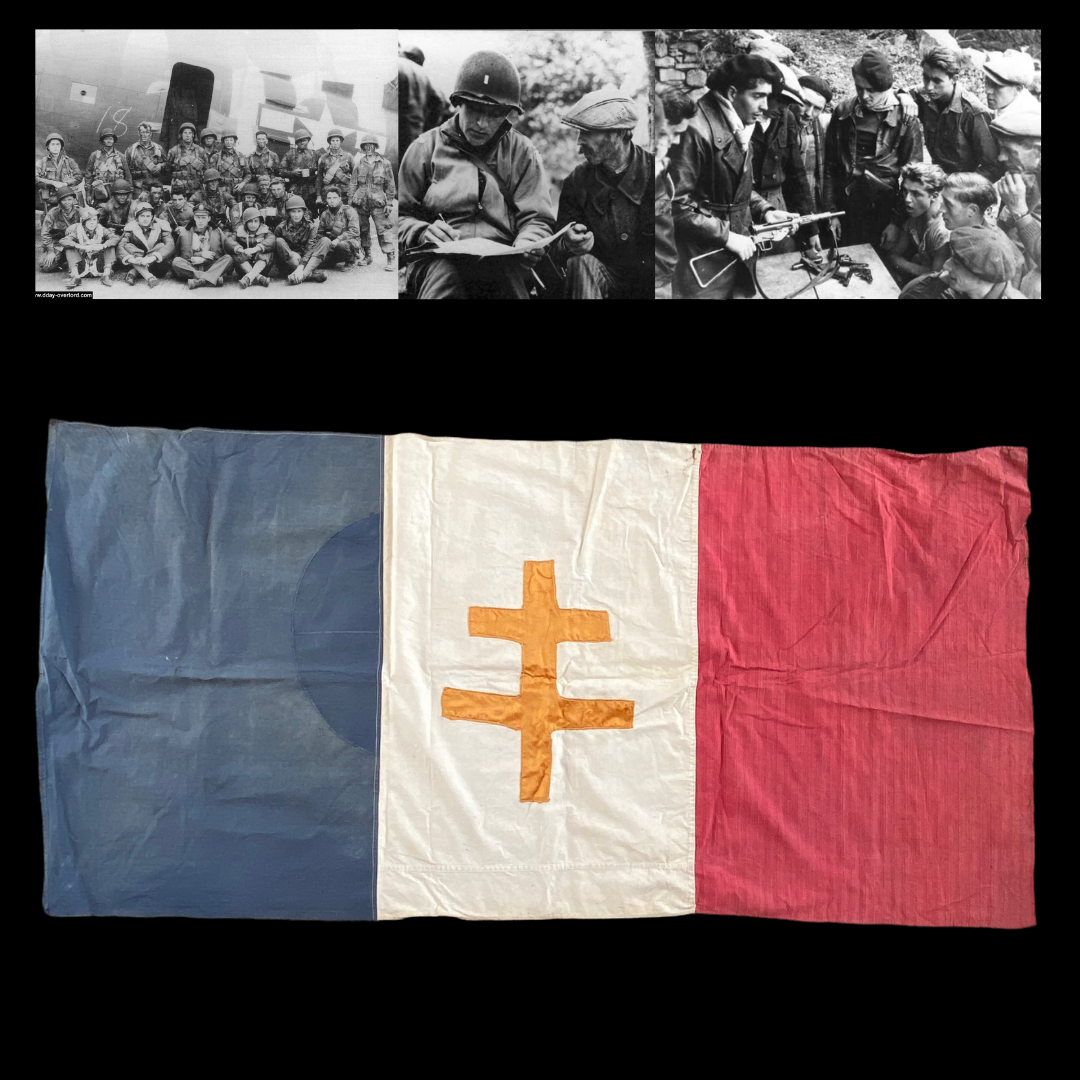

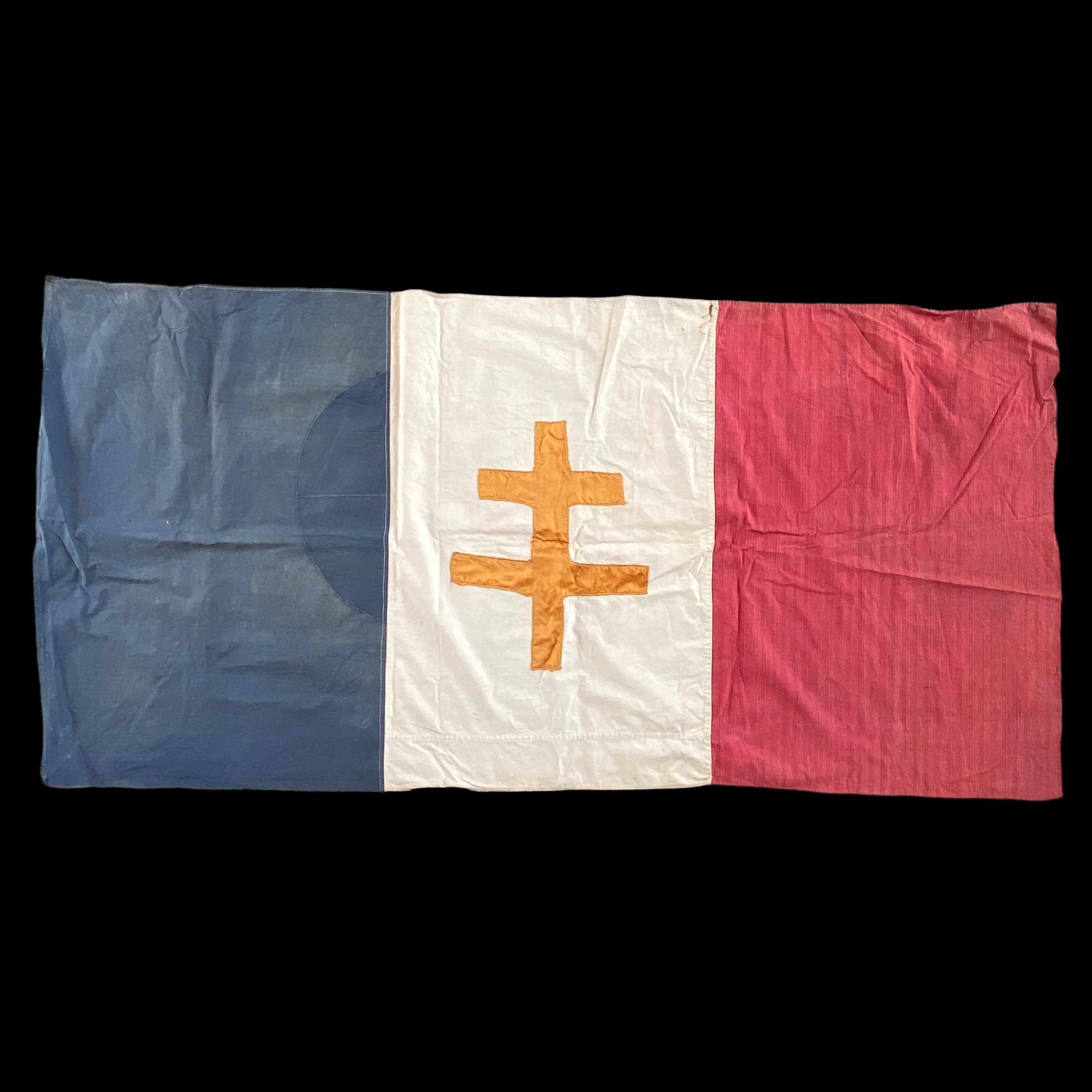
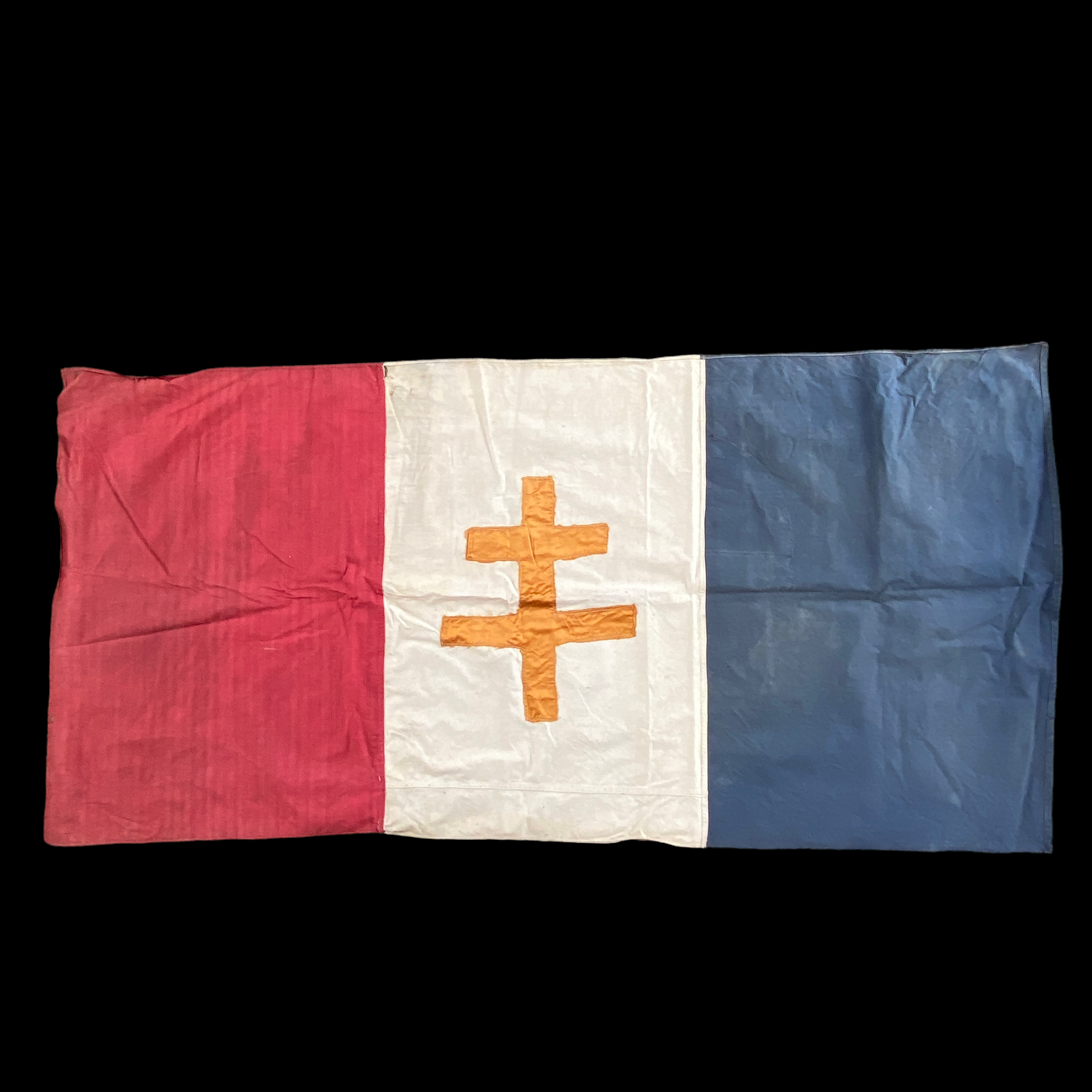
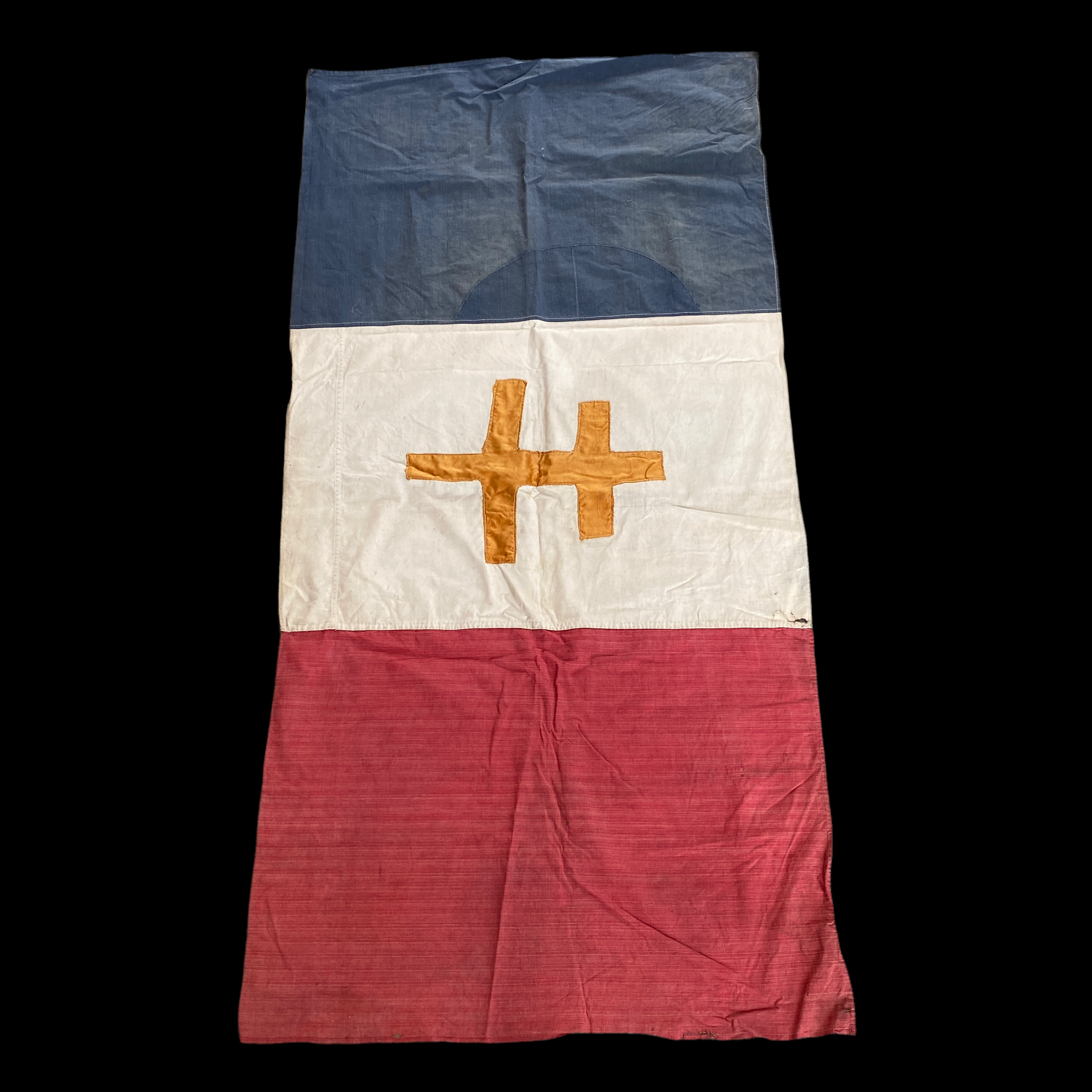
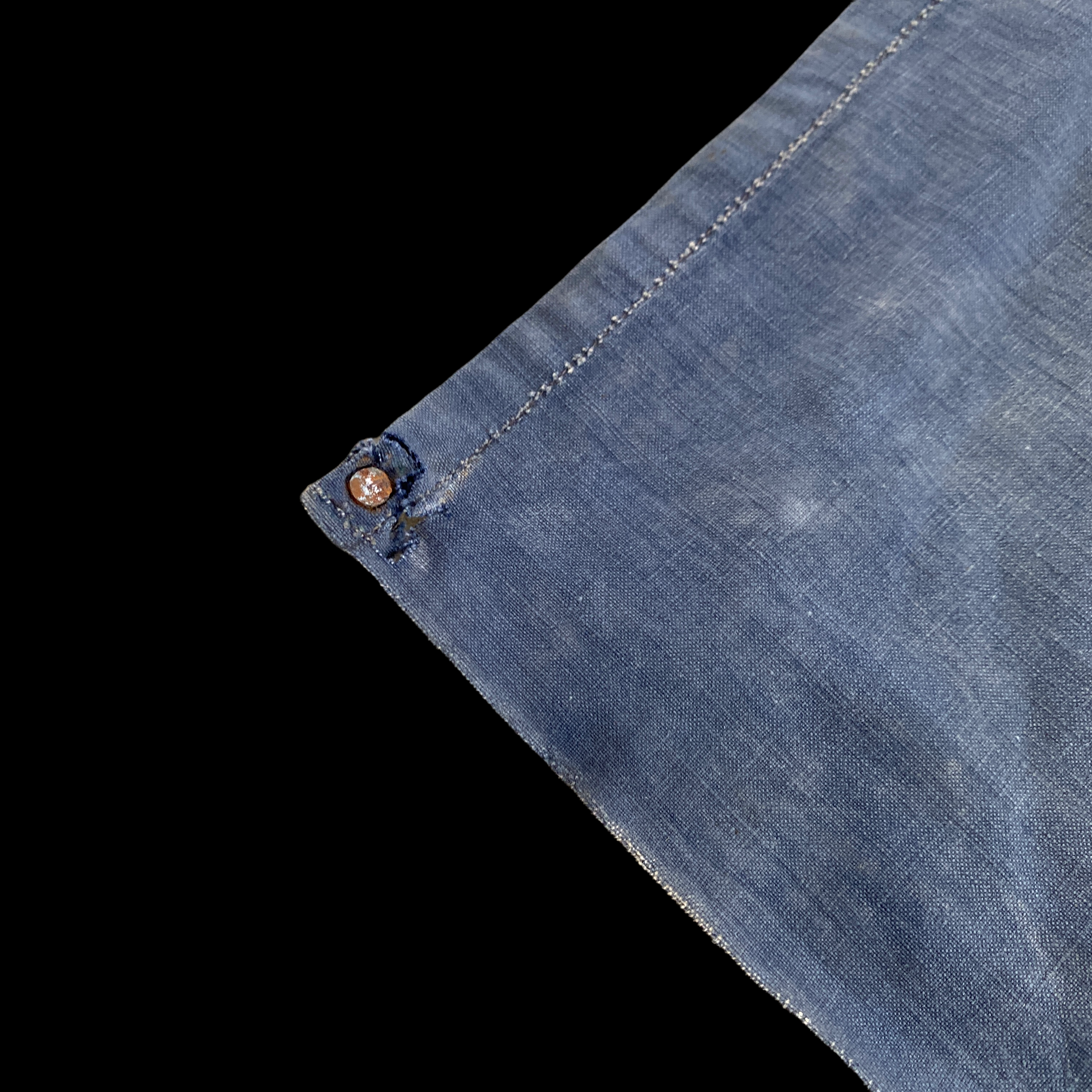
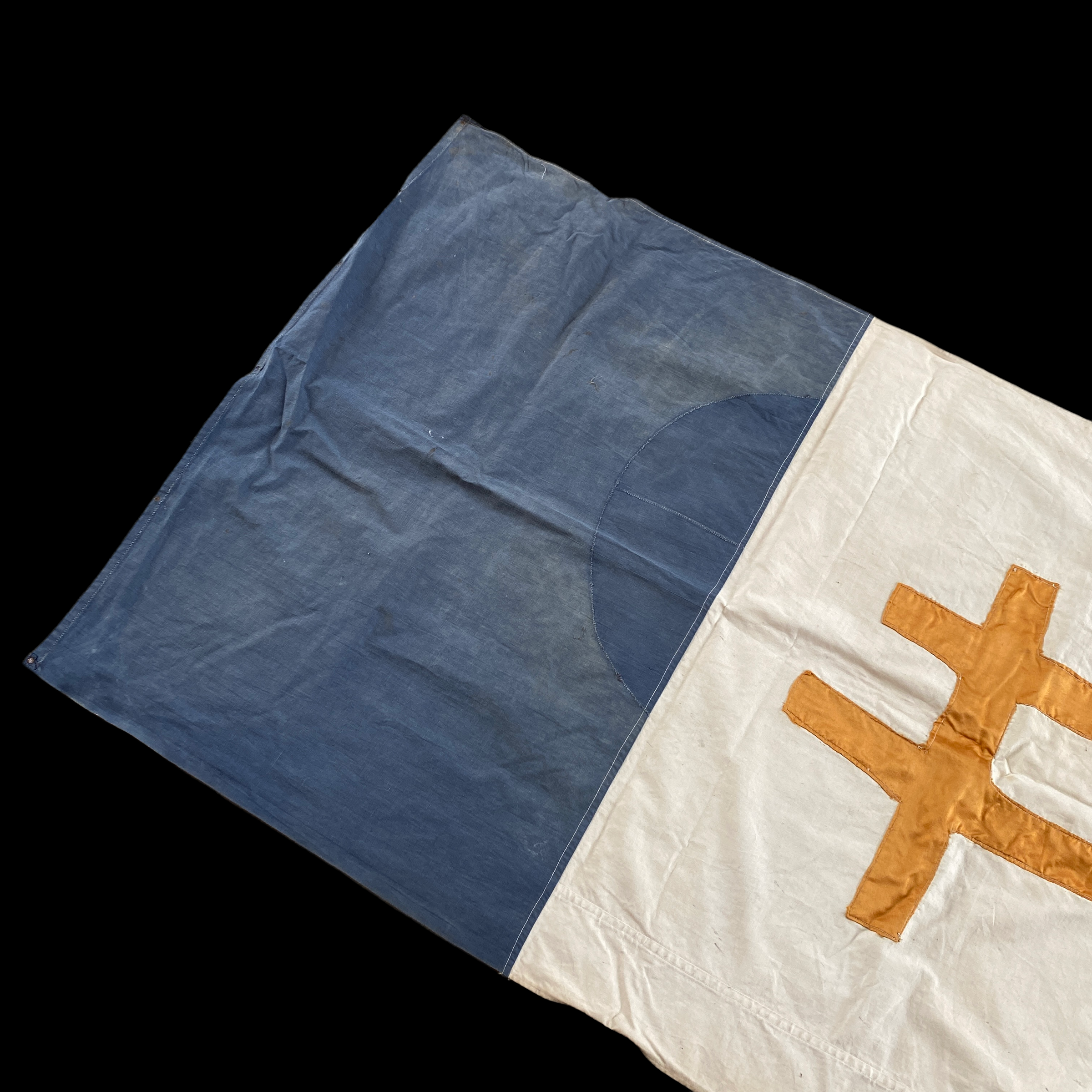
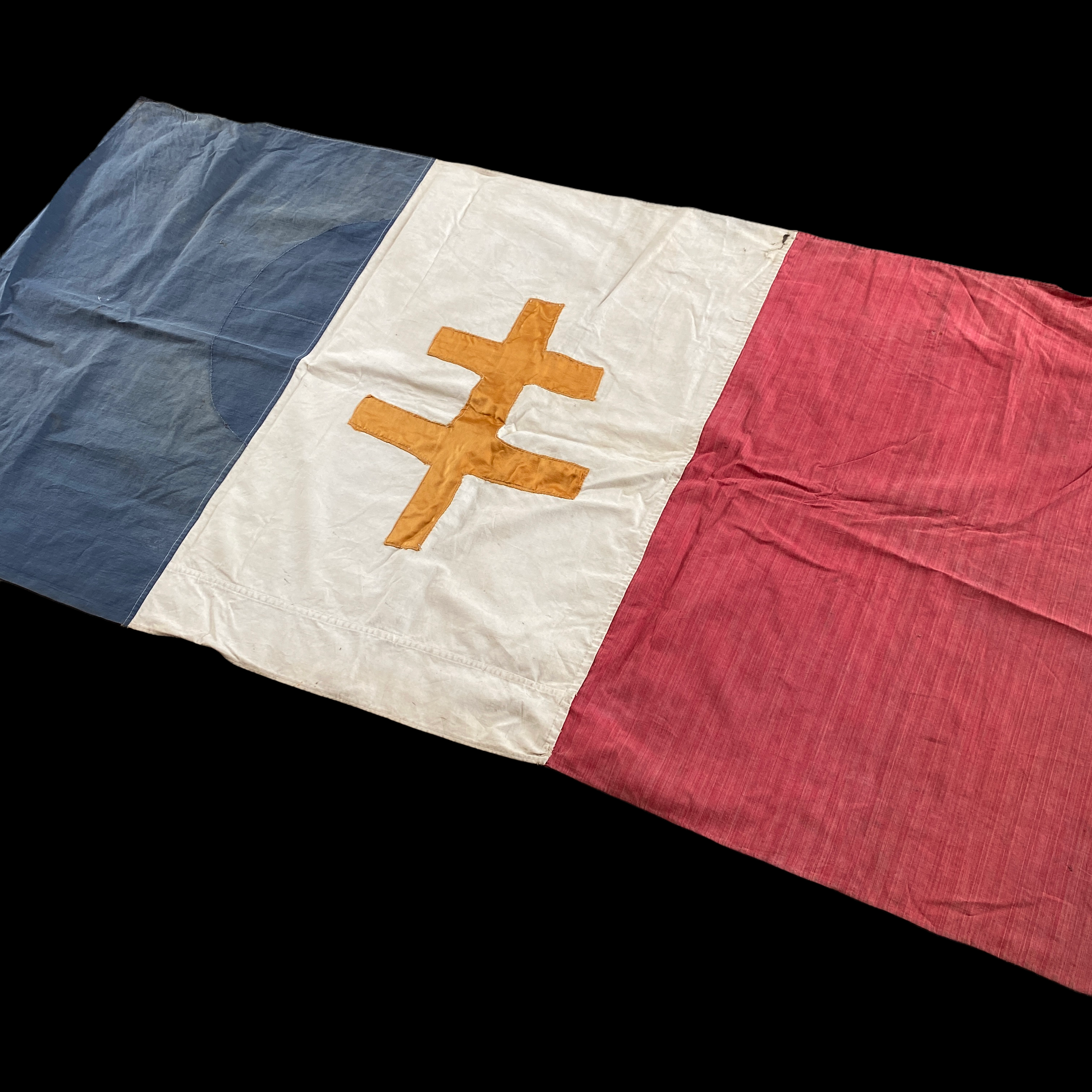
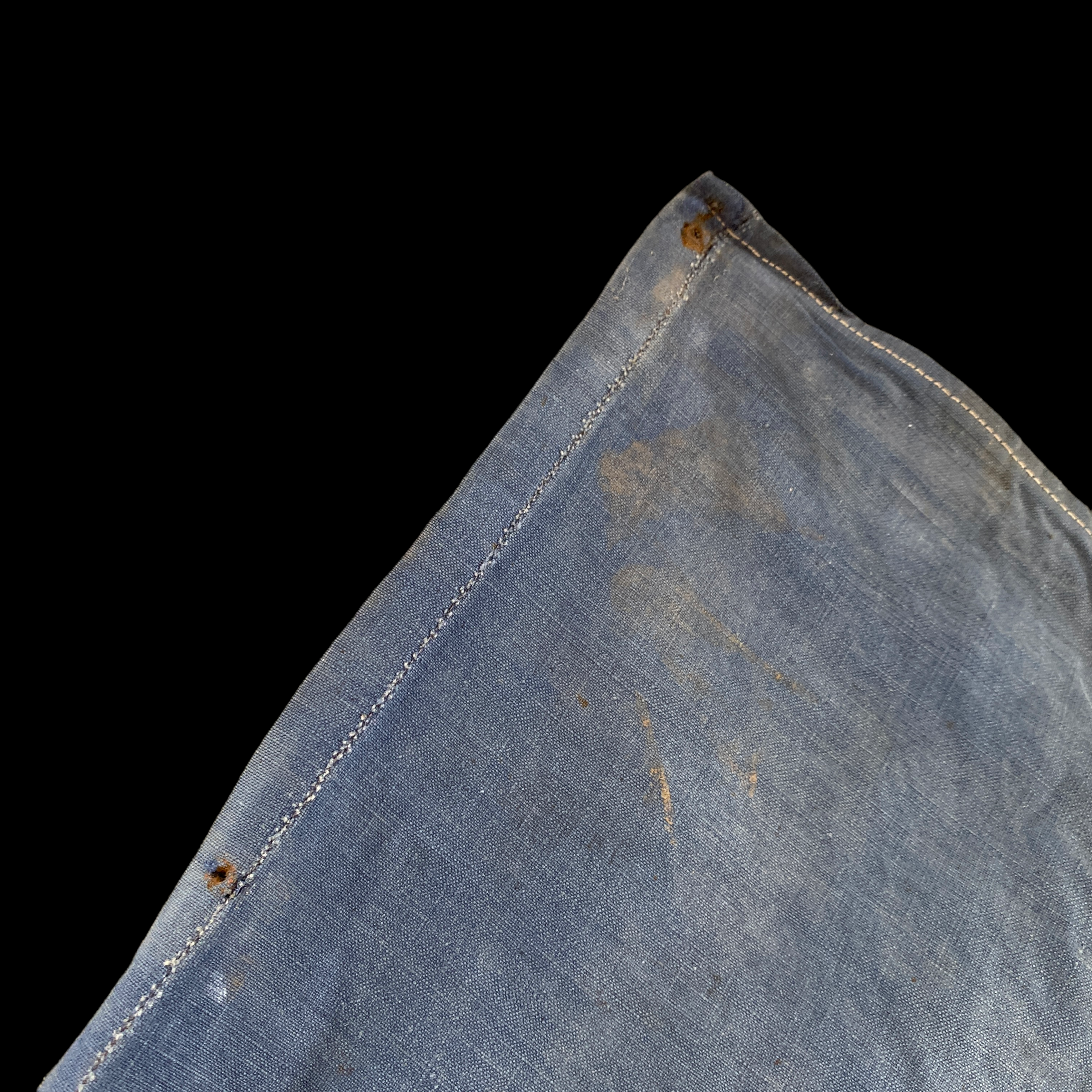
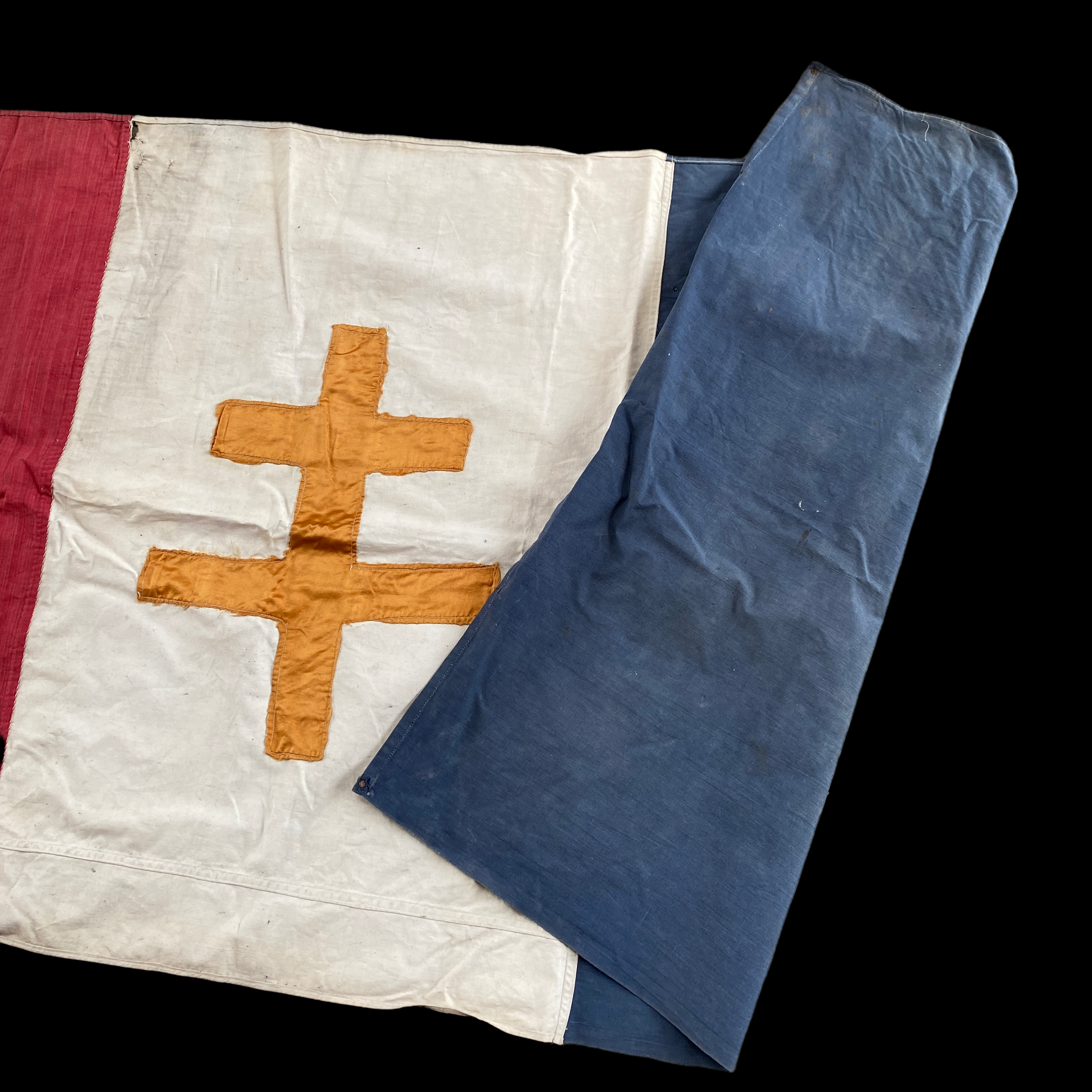

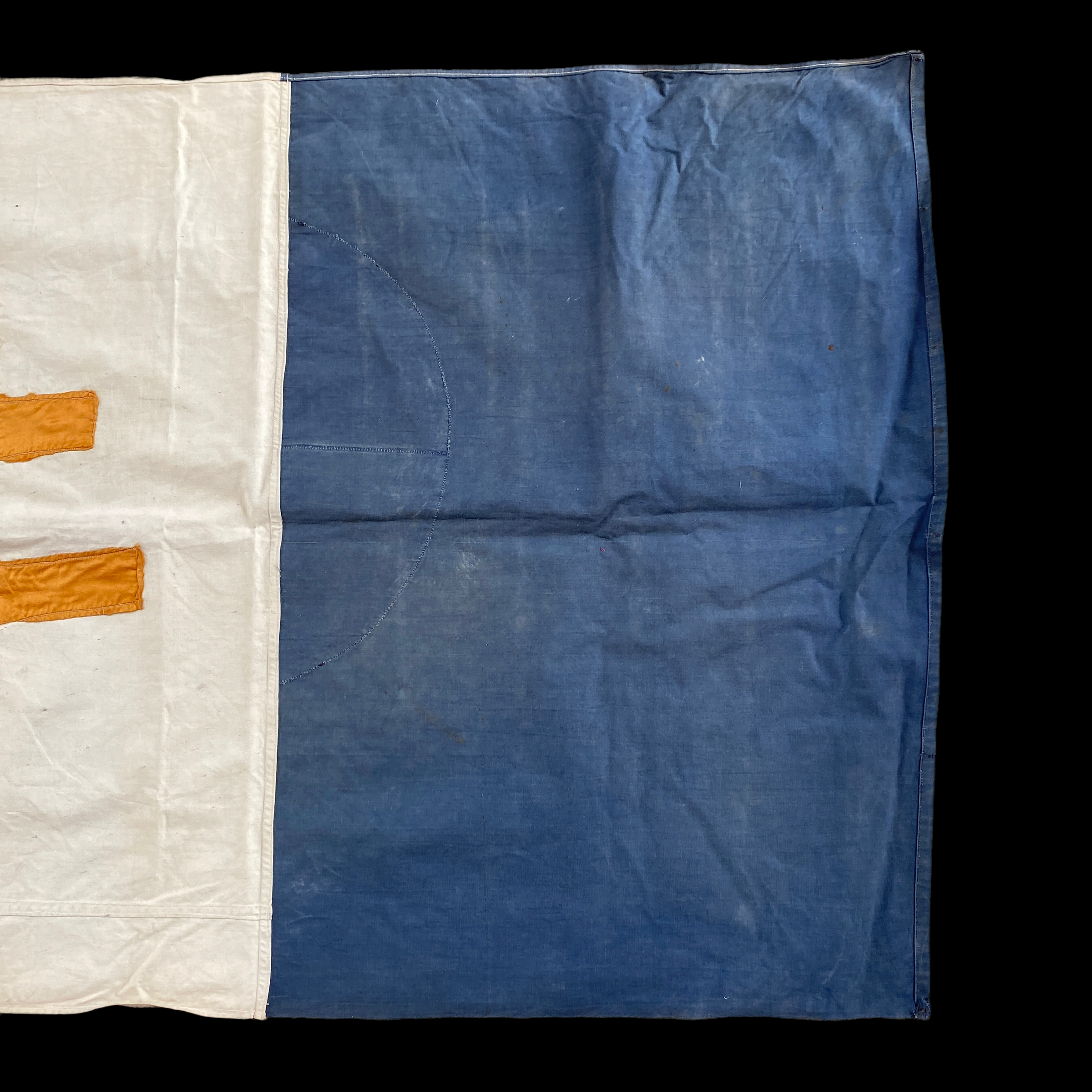

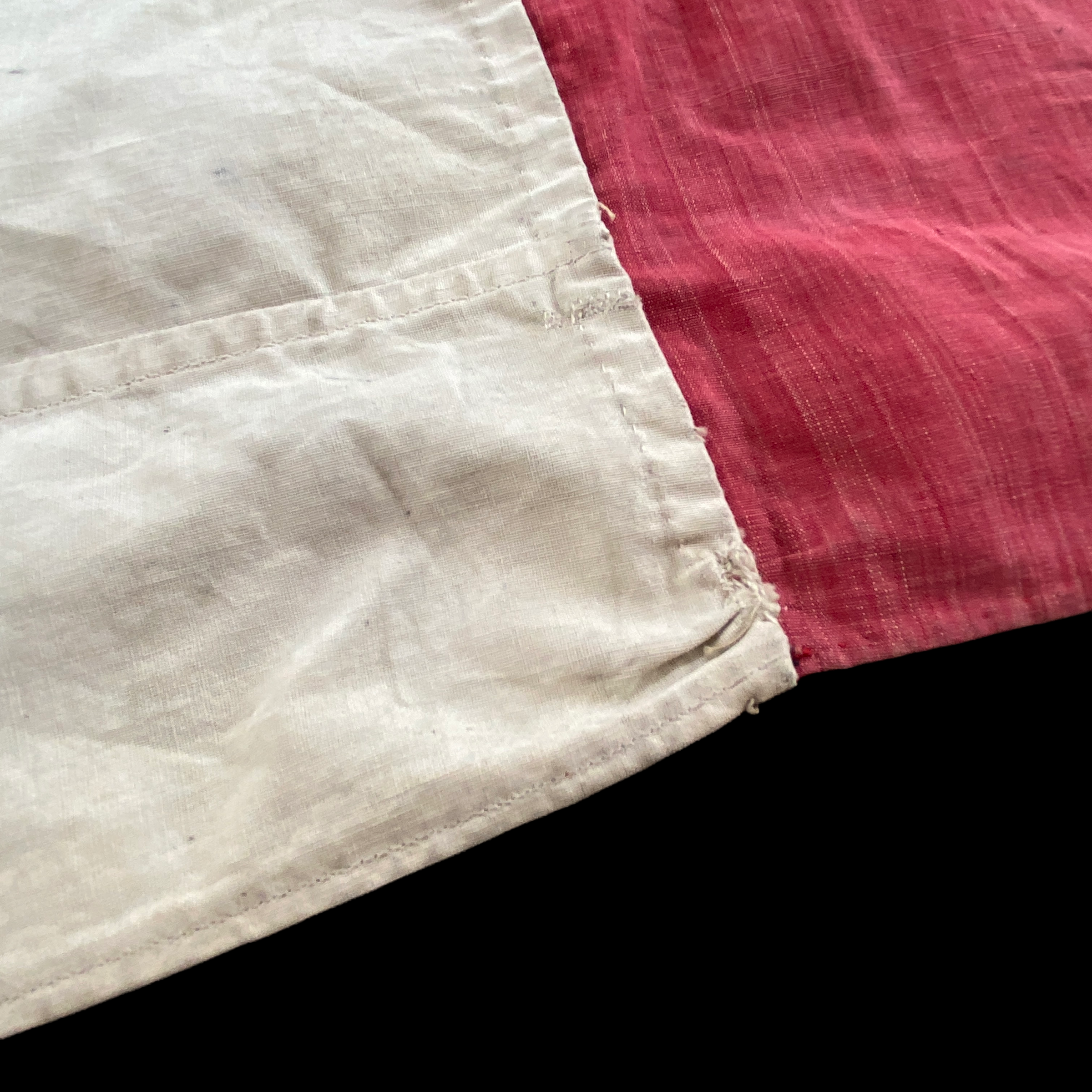
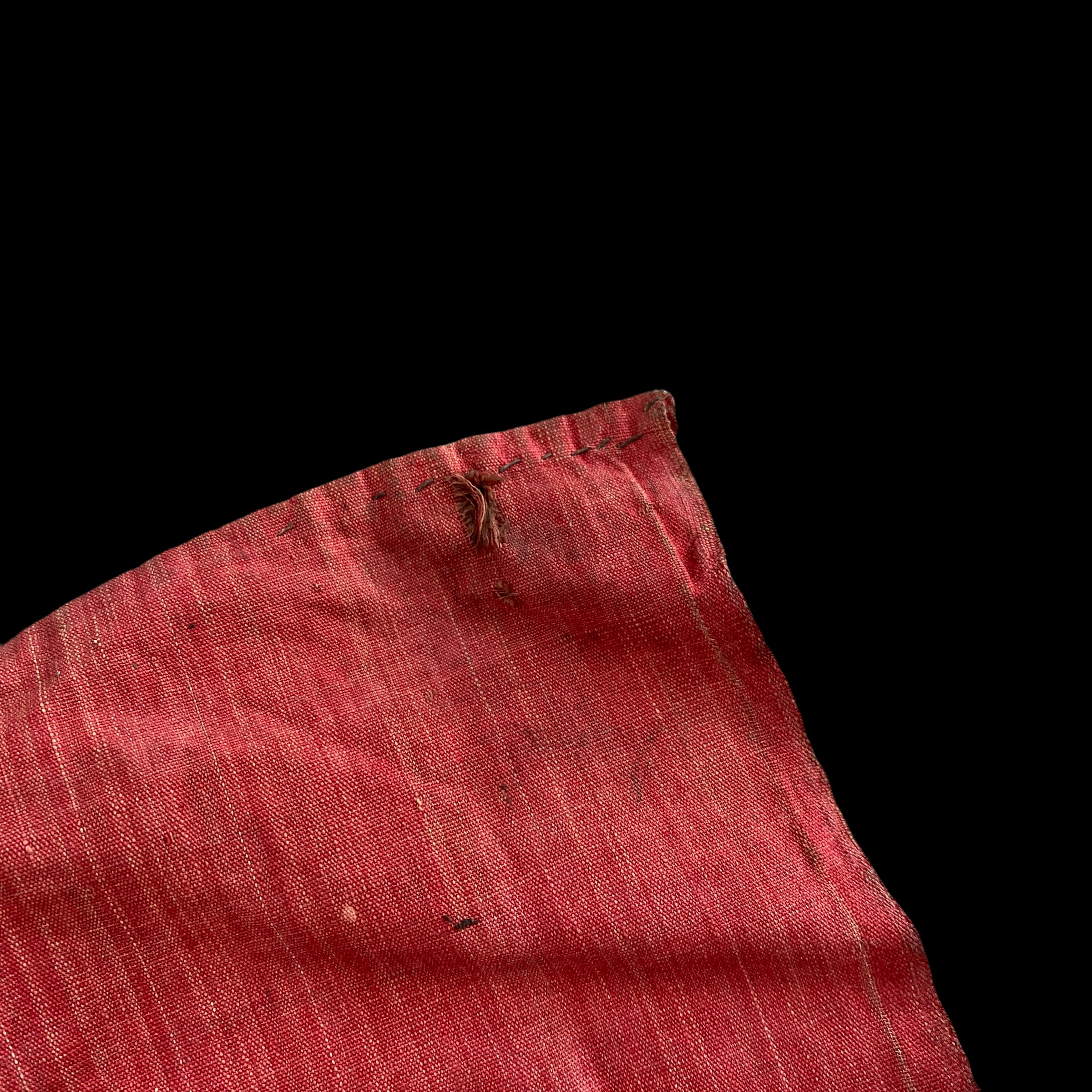
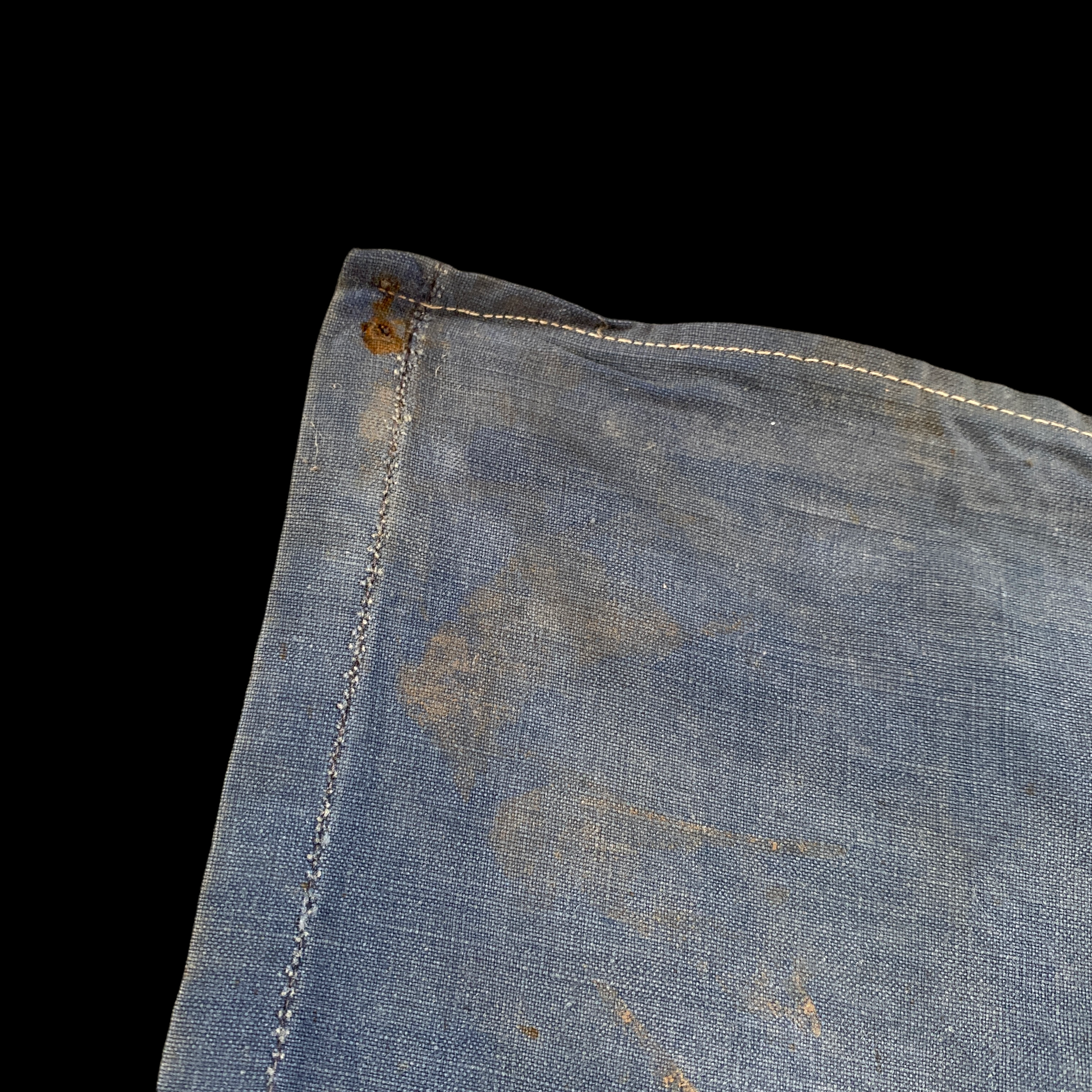
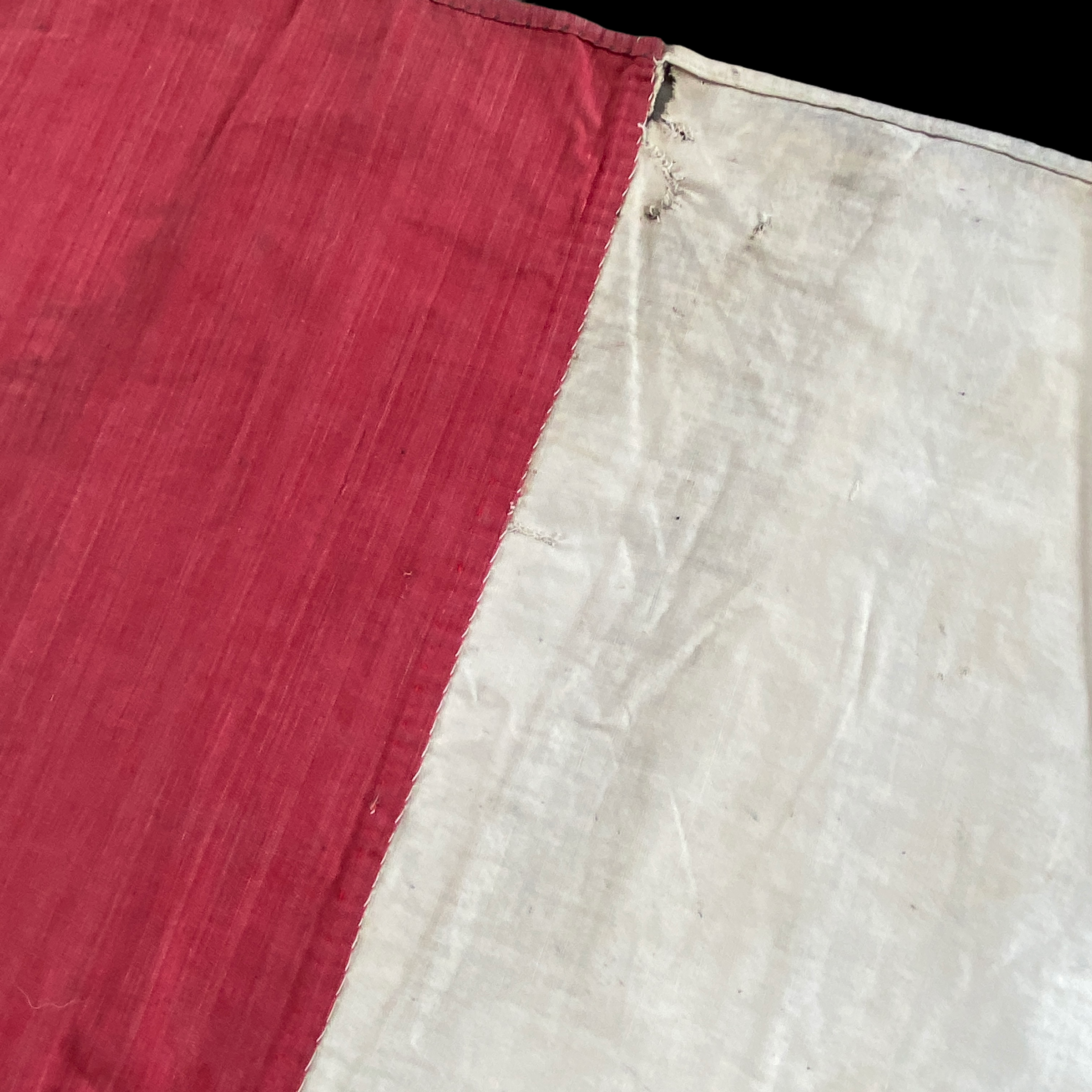
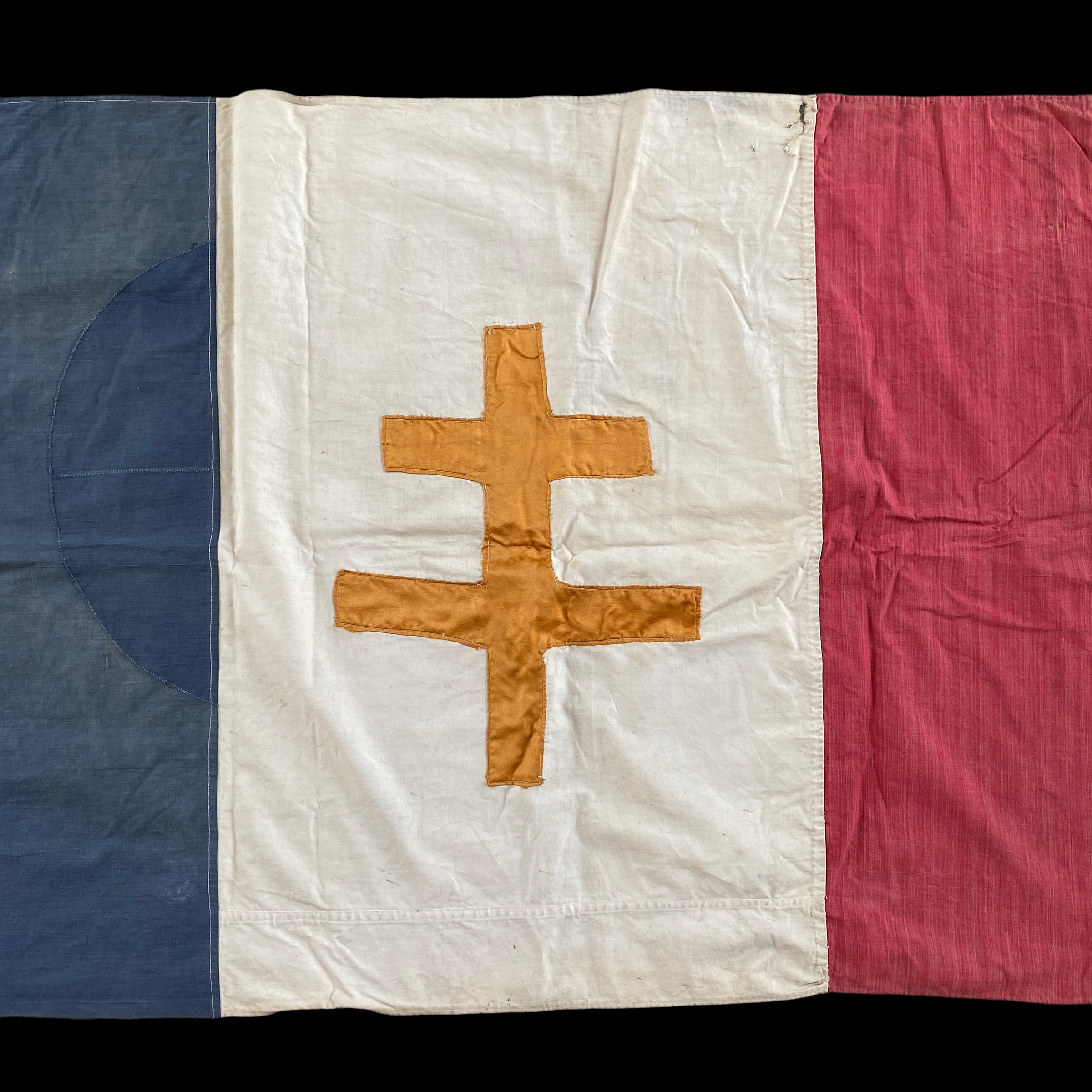
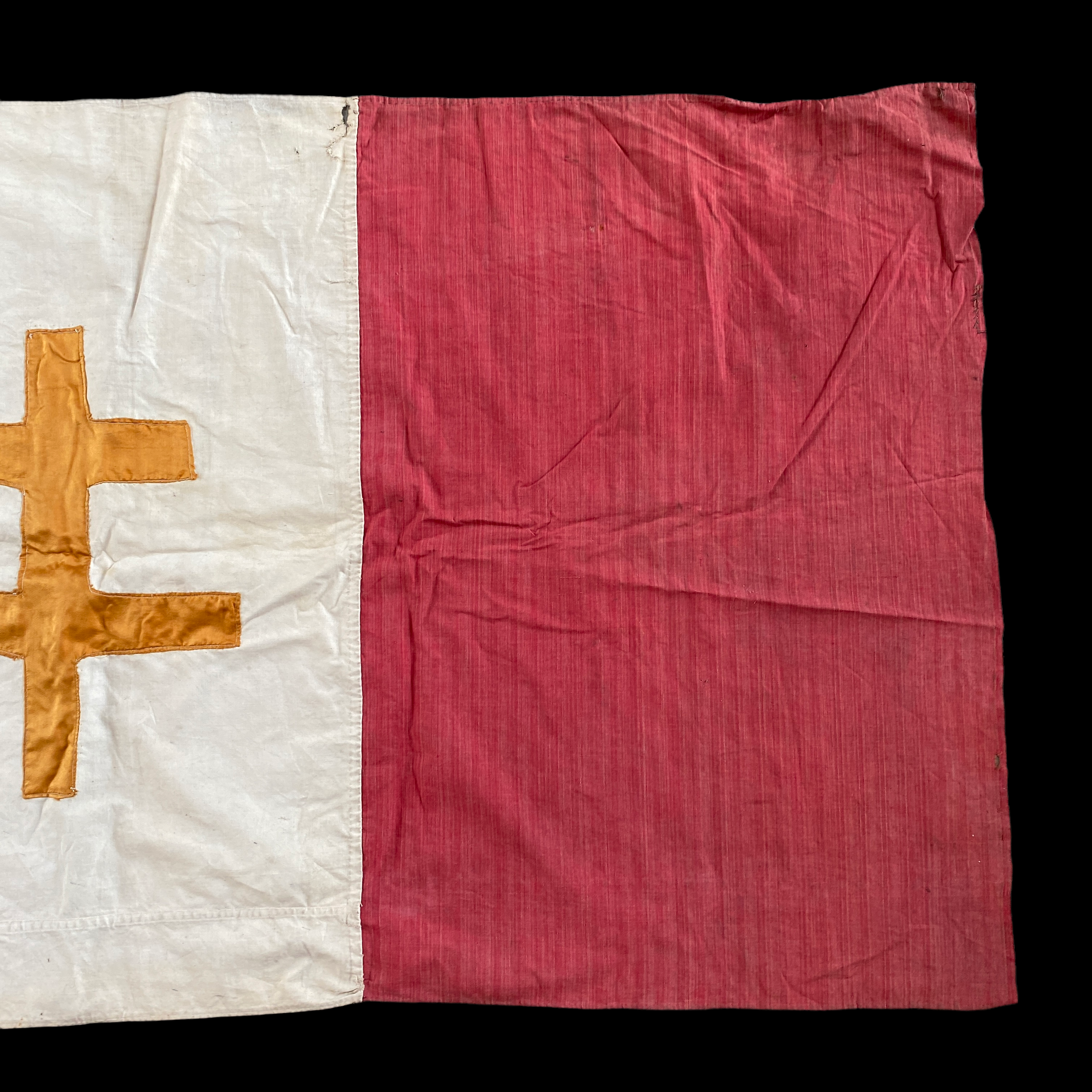



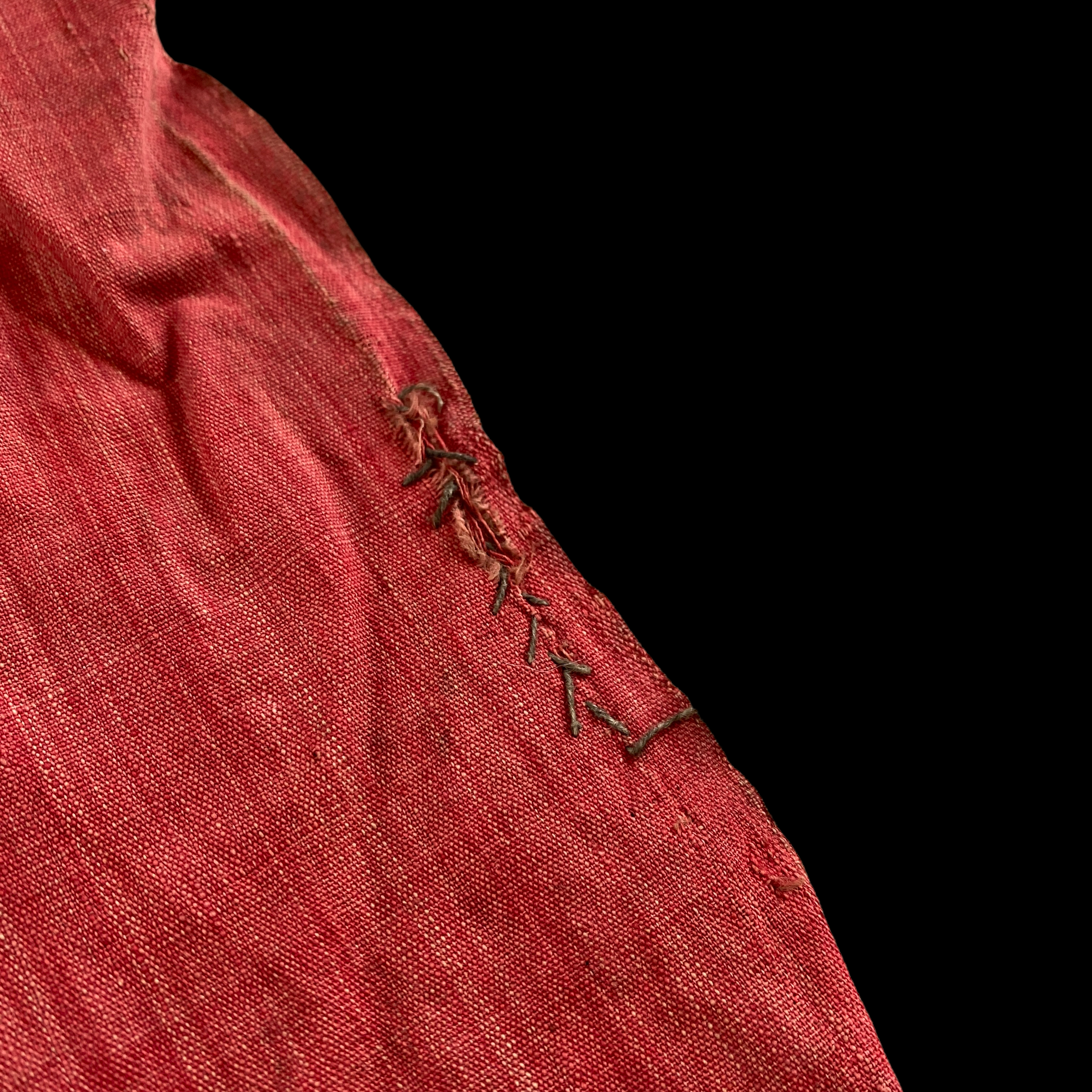
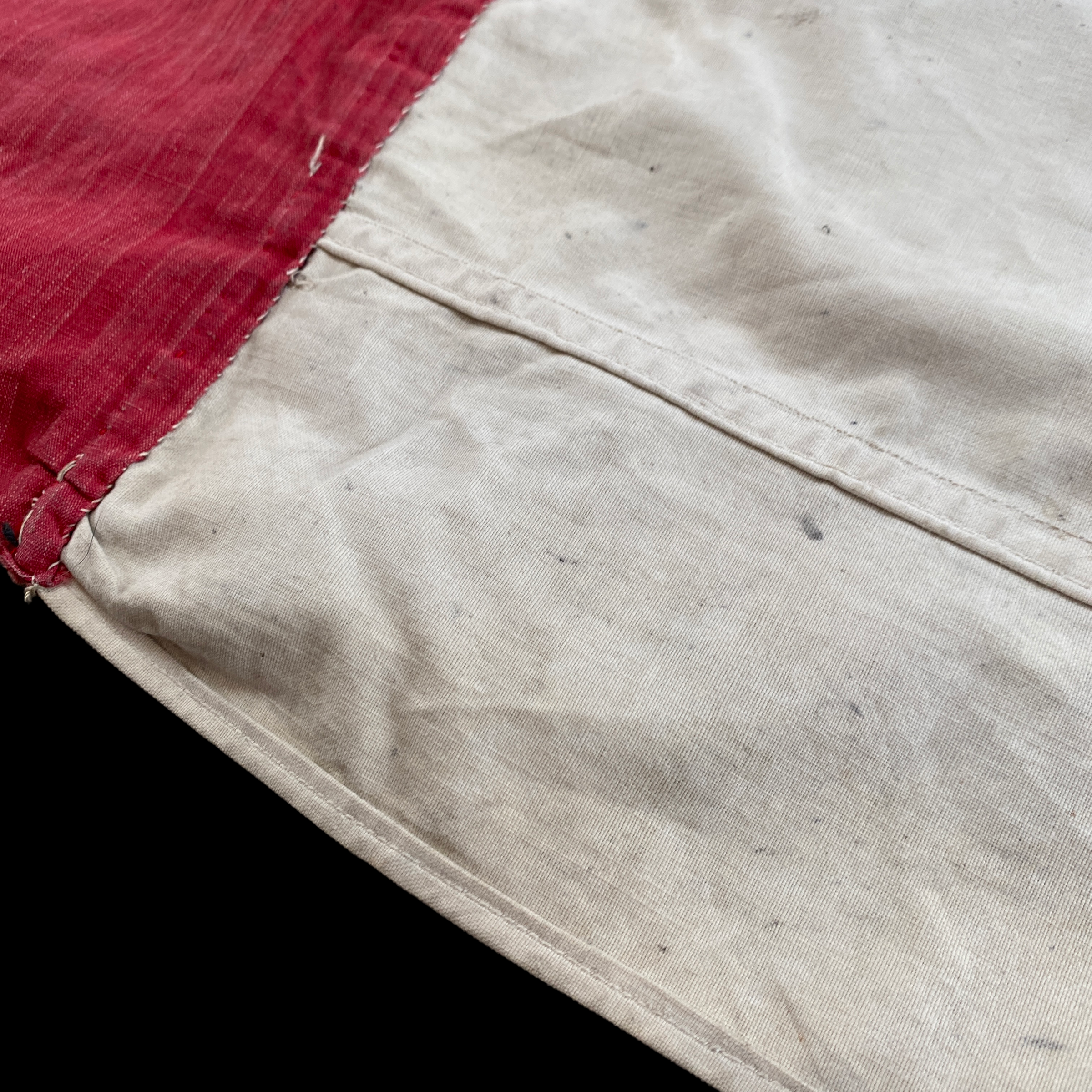
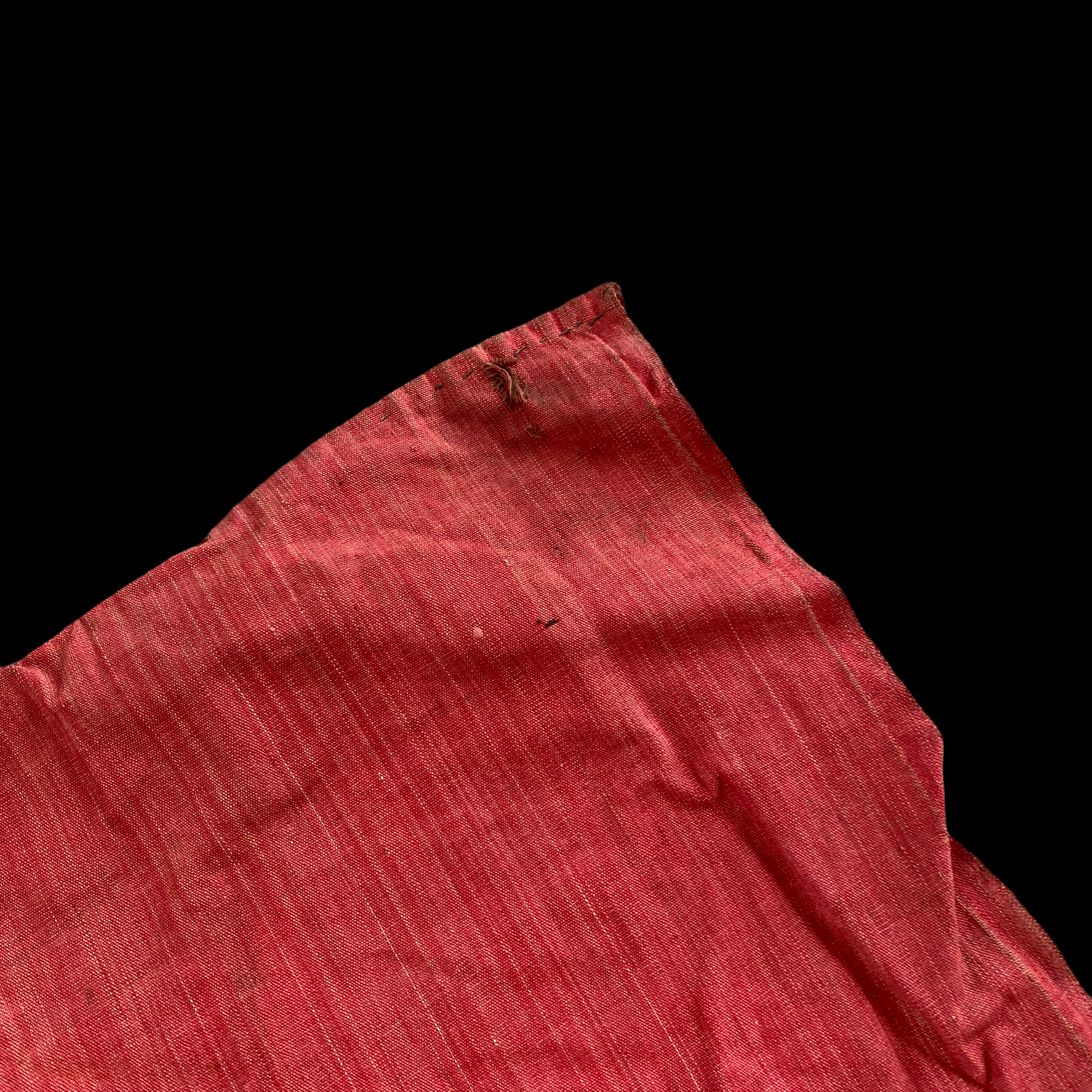


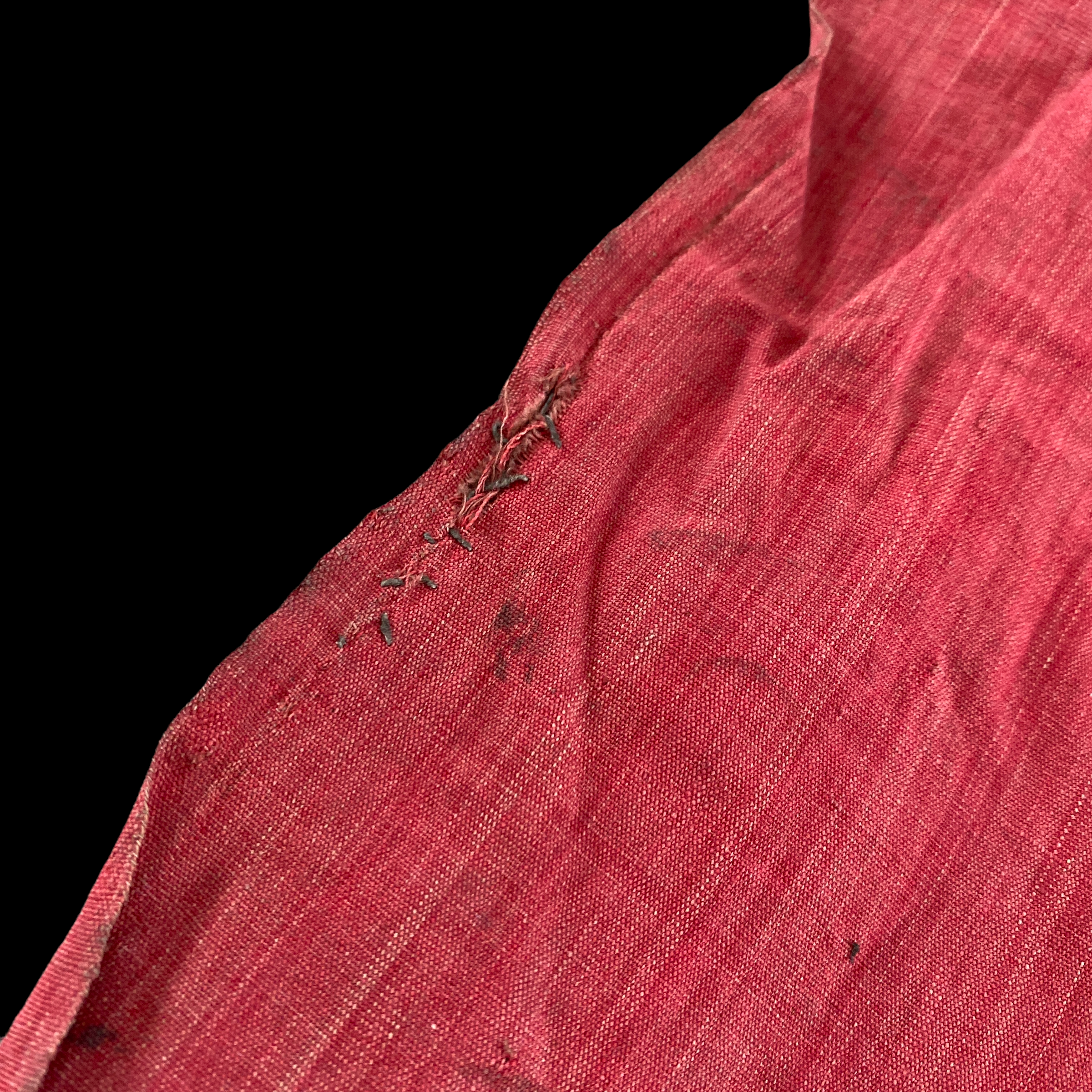
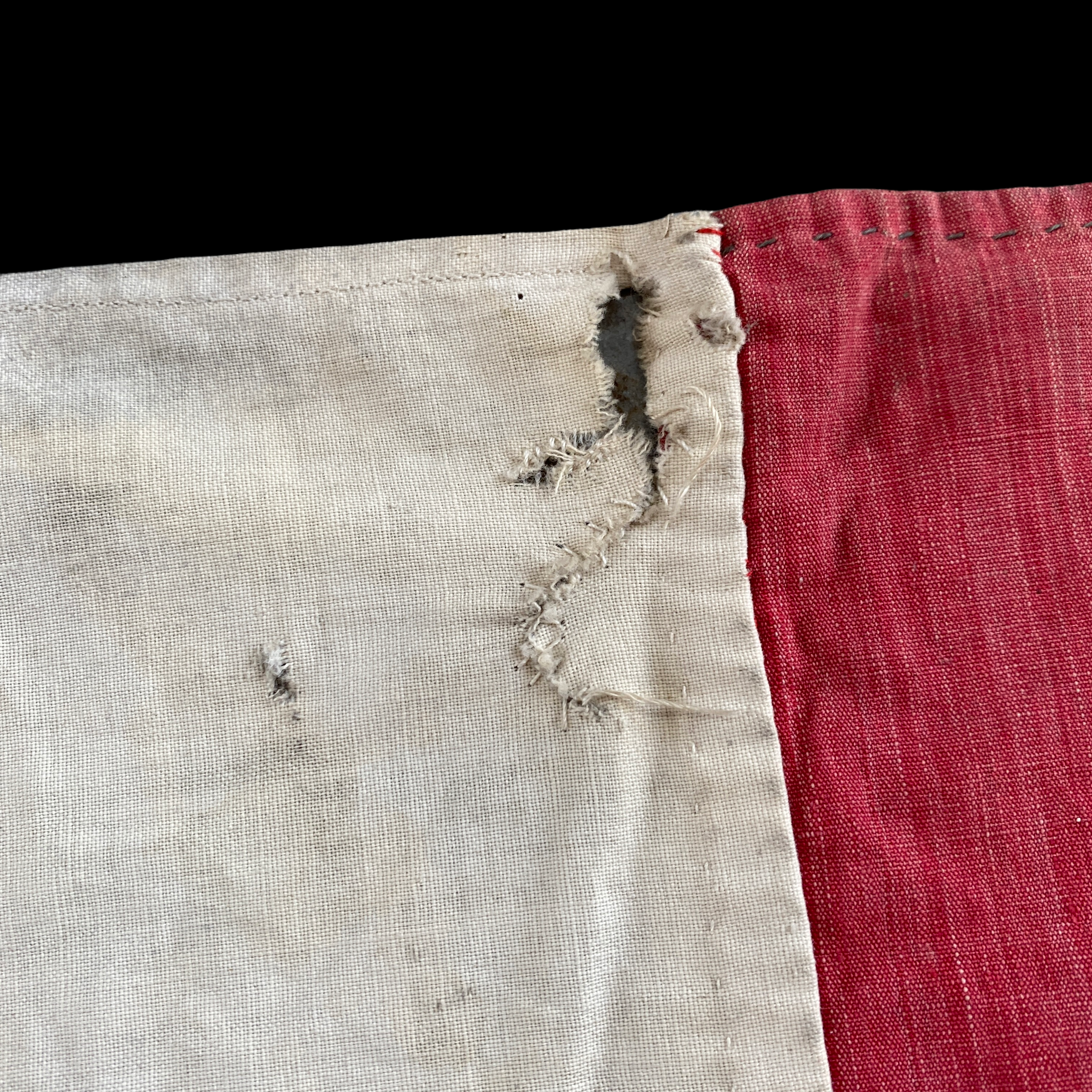

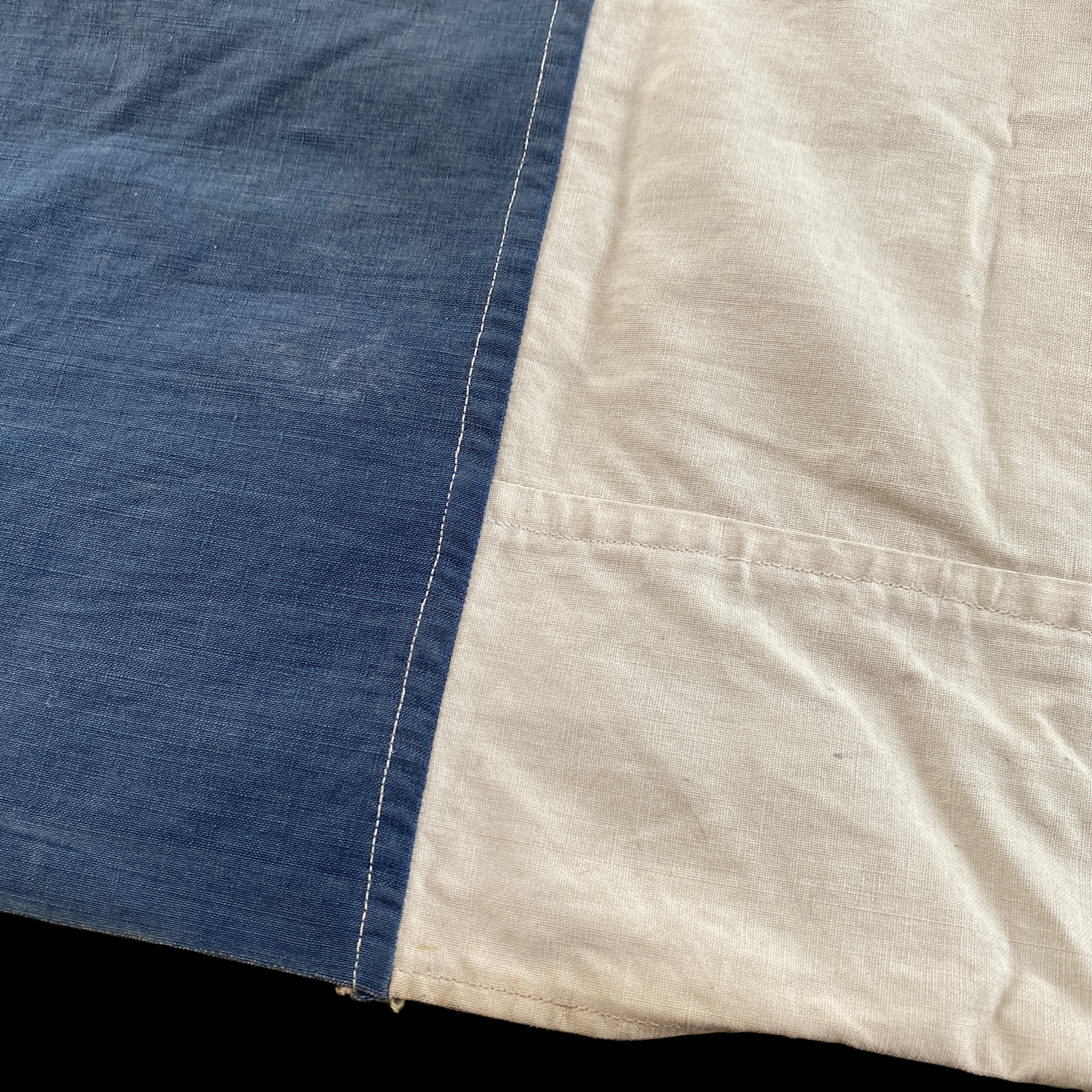



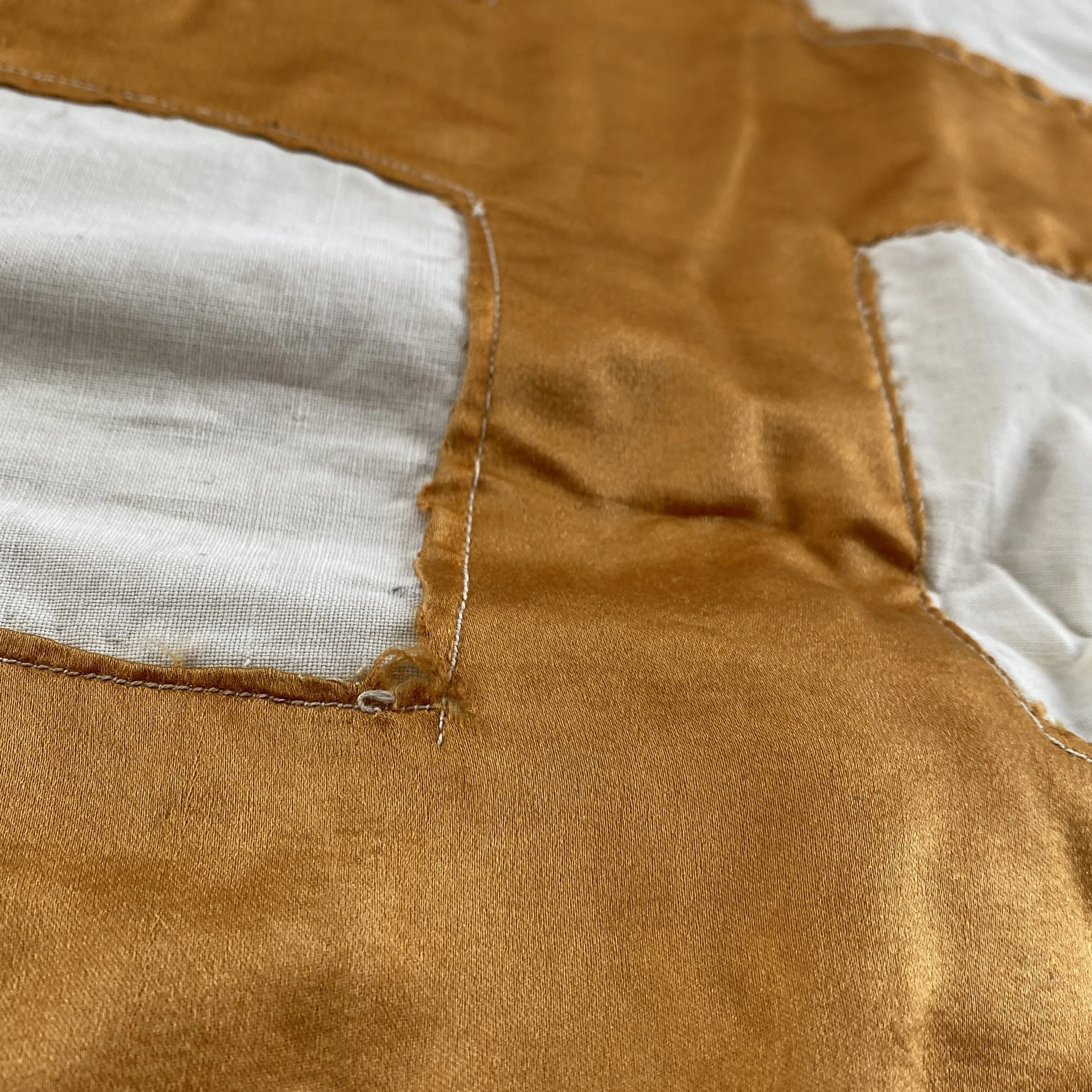




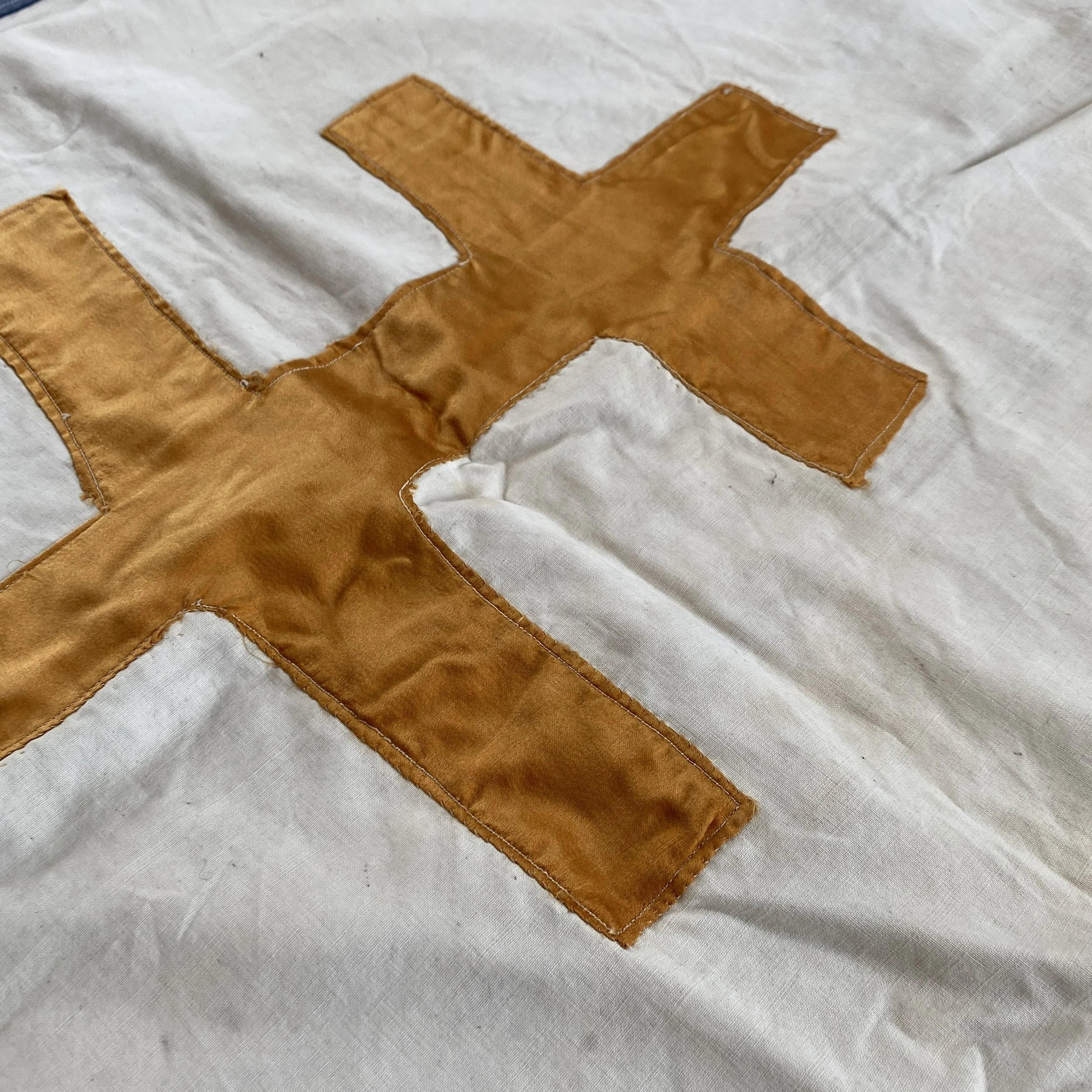
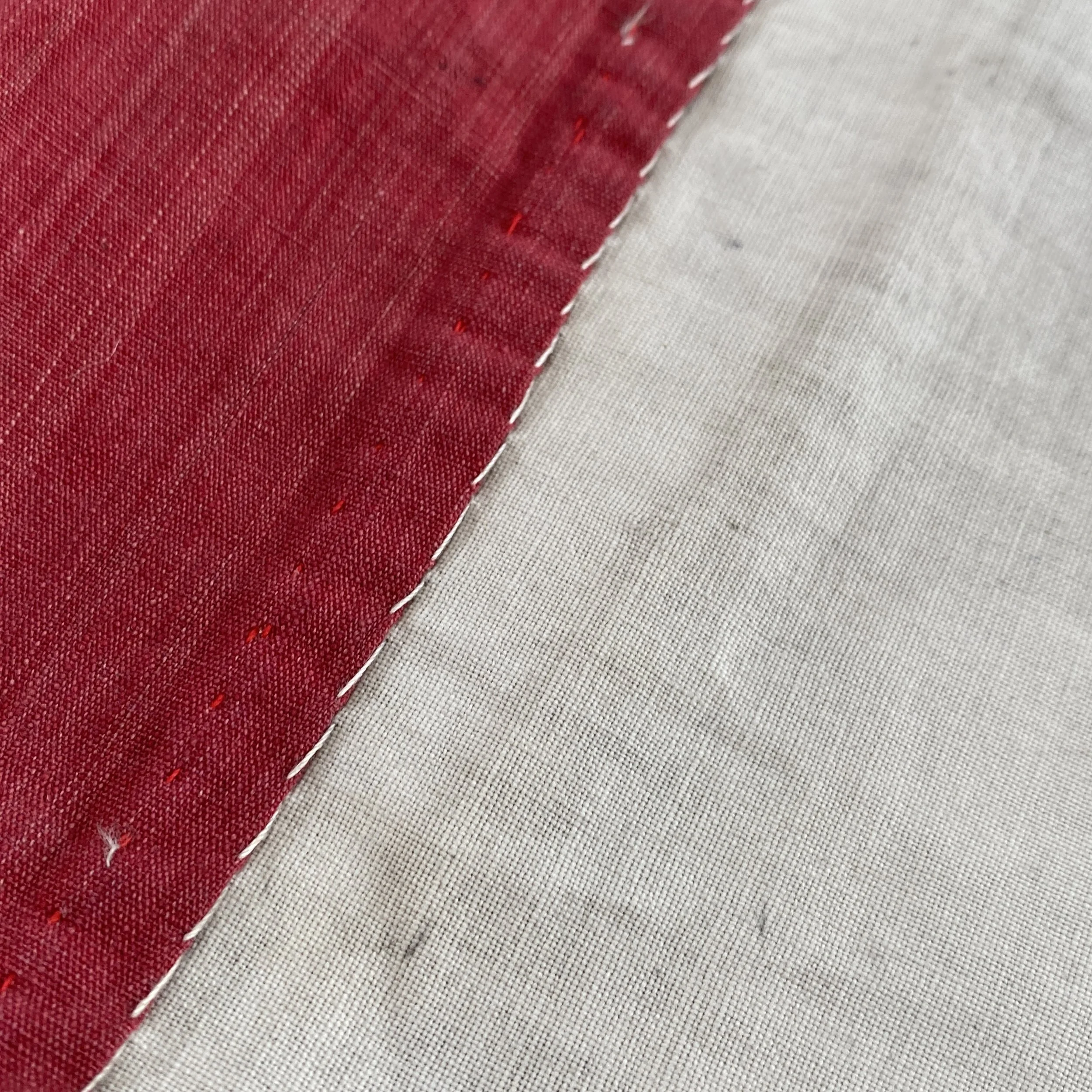









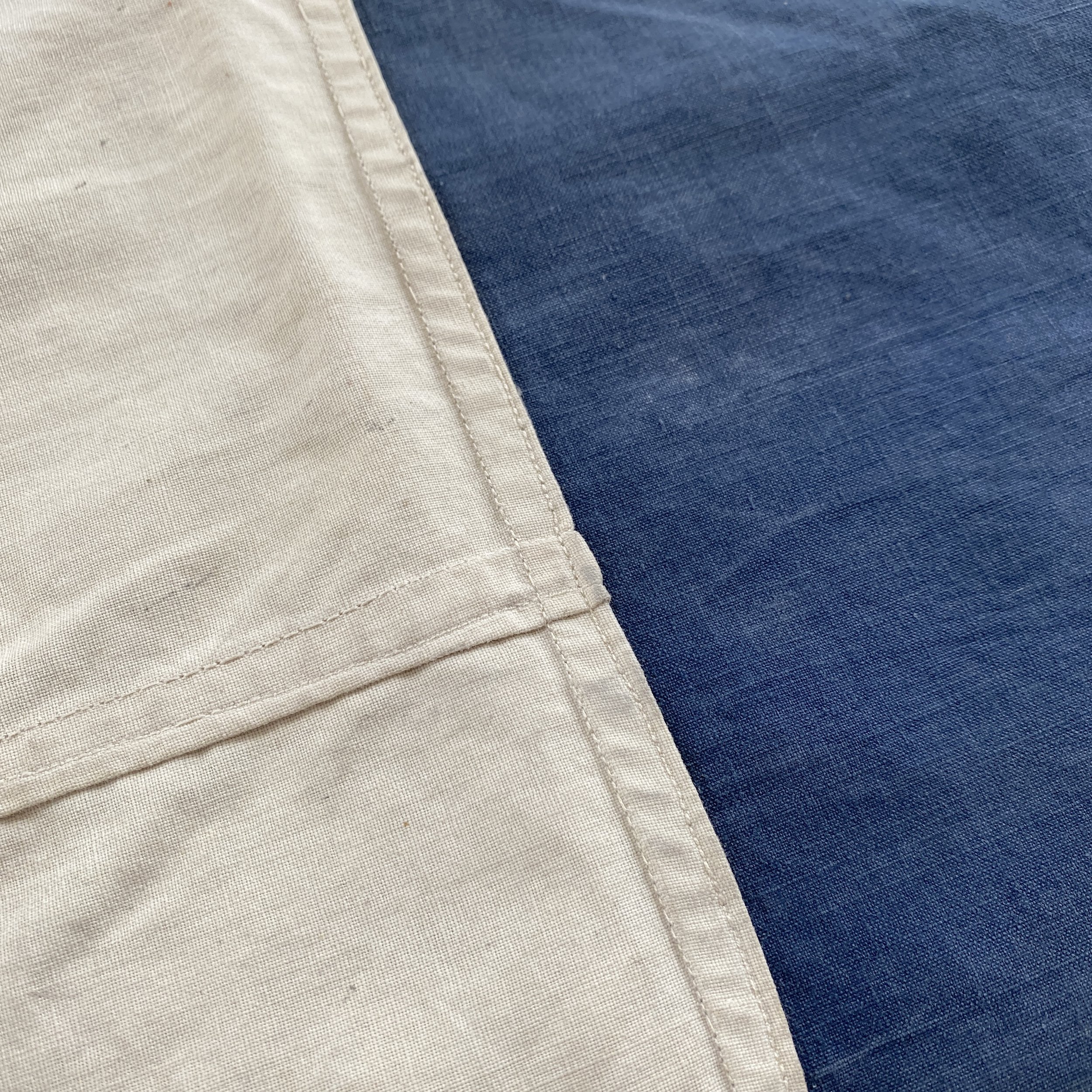



VERY RARE WWII 1944 D-Day Neuville-au-Plain Normandy French Resistance Fighters Flag
Comes with hand-signed C.O.A.
Size:
This incredibly rare and museum worthy WWII French resistance fighters flag was handmade and hastily created for the secretly anticipated D-Day Allied landing of Normandy on June 6th, 1944.
In total, nearly 1,000 secret sabotages were carried out by the French resistance from June 5th to 6th, 1944. In the evening of June 6, 1944, the losses of Normandy resistance fighters are estimated at 124 killed, wounded, missing or taken prisoner. Their excellent knowledge of the Normandy terrain represented an undeniable added value for dismounted troops and airborne units.
What makes this particular WWII French resistance flag incredibly rare is that this flag comes from Neuville-au-Plain, Normandy, France. Neuville-au-Plain is located just north of Sainte-Mère-Eglise and just inland from the designated D-Day amphibious landing site of Utah Beach.
In anticipation of the Allied landings of Normandy and their liberation, many French citizens and resistance fighters in France secretly made Allied, French, and resistance fighter “liberation flags”. Their make-do attributes are nearly limitless. A lack of specific knowledge about the flag itself, a lack of time, and a lack of suitable materials in an utterly devastating region combine to result in a collection of flags where nearly every example is unique and rare. French civilians caught making liberation flags during the German occupation were executed immediately.
This French resistance flag is made from a variety or different cloth materials found in the Neuville-au-Plain, Normandy region. This very large resistance flag is hand-stiched and sewn together to form the original French flag colors. The red is believed to be fabric from an improvised red table cloth while the blue is a very heavy duty unknown fabric type. The resistance fighter also were able to obtain some sort of light shiny fabric material to hand stitch the infamous French resistance symbol in the middle. The flag also contains one of the original nails that were used to hang the flag! This resistance flag is in incredible condition given its age while still featuring signs of heavy use and wear. This wear can be seen in certain areas on the flag were the fabric was ripped, worn and repaired by being hand-sewn and repair stitched together.
During Operation Overlord, Neuville-au-Plain was the primary assault target entrusted to the 2nd battalion of the 505th Parachute Infantry Regiment (82nd Airborne Division) commanded by Lieutenant-Colonel Benjamin H. Vandervoort. The French town of Neuville-au-Plain saw heavy combat and German resistance and after heavy casualties was liberated on D-Day +2 (June 8th, 1944).
In order to increase the chances of success of the Overlord operation, the French networks receive a succession of orders to get into action, through the “personal messages” of the B.B.C. Each coded sentence is sent to a particular network, which knows its meaning and date of execution, in order to begin the sabotage actions and to disrupt the German forces.
On June 5, 1944, at 9:15 pm, the following messages were broadcast: “… wound my heart with a monotonous languor”: the resistors have 48 hours to carry out the destruction. By inference, some networks probably established that Operation Overlord would take place in the next 48 hours.
Neuville-au-Plain and D-Day:
The Americans define a jump zone located less than one kilometer southwest of Neuville-au-Plain, coded as “O” drop zone (DZ). Parachutes on DZ “O” after the arrival of the Pathfinders begin at 1 hour 51. With all beacons in place, the 118 sticks are dropped in excellent conditions and the 505th Parachute Infantry Regiment (PIR) records the best precision results of all American airborne regiments deployed in the early hours of June 6, 1944: 60 sticks (50% of the regiment) land on target or within one kilometer of the center of the zone Jump and 20 sticks are in a circle of three kilometers radius around the DZ. In total, 75% of the 505th PIR is close to its rally point. The other elements are scattered in the Cotentin region.
Lieutenant-Colonel Vandervoort breaks his ankle on landing, but refuses to remain isolated among the wounded soldiers; He absolutely wants to command his men and starts the progression towards Neuville-au-Plain. At 6:14 am, he met the corps commander of the 505th PIR, Colonel William E. Ekman, who had no idea of the advancement of the fighting for the taking of Sainte-Mère-Eglise, one of the priority missions of his regiment. Ekman stopped the advance of the 2nd battalion while waiting for news of the 3rd battalion. At 8.10 he decided to change the mission of the 2nd battalion, which must now concentrate on Sainte-Mère-Eglise, leaving the 3rd section of company D at the orders of Lieutenant Turner B. Turnbull to move towards Neuville- au-Plain.
The 3rd section of Lieutenant Turnbull consists of 42 paratroopers equipped with a few additional weapons. In accordance with the orders received, Turnbull settled on the cover north of the commune. At 10.30 am, a column of German soldiers of about 200 men approached the American positions: the paratroopers unleash a massive and precise fire that manages to stop the enemy, forcing him to withdraw. Unable to neutralize the US defense by direct fire, the Germans decided to use their mortars to fix the section of paratroopers and they simultaneously initiate a maneuver bypass with the infantry. Undergoing heavy losses and soon overwhelmed by the enemy, Turnbull realizes that he can not hold out any longer. Lieutenant-Colonel Vandervoort sends company E to Captain Clyde Russell to support his break-in contact. At nightfall, Lieutenant Turnbull retreated to Sainte-Mere-Eglise, 26 of his men fell at Neuville-au-Plain. The fierce resistance of the Turnbull section and the sacrifices of his men allowed Colonel Ekman to be given enough time to strengthen the northern sector of Sainte-Mère-Eglise.
The following day, June 7th, the troops disembarked on Utah Beach prepared to launch an offensive directed towards the north of Cotentin and take position against Neuville-au-Plain. The 746th Tank Battalion attacks the commune but fails to settle in the village: however, the Germans are disorganized and are pushed to the north of the commune.
On the morning of June 8, the 8th Infantry Regiment (4th Infantry Division) commanded by Colonel James A. Van Fleet stormed Neuville-au-Plain where the American infantry were taken to task by the German defenders. The latter hold their position and resist long hours before bending in the middle of the afternoon. The municipality finally fell into the hands of the Americans, who immediately proceeded to the north.
On the night of 9 to 10 June, the village is occupied by 155 paratroopers of the 507th PIR which reinforce the 508th PIR the next day.
The role of the French resistance during the Battle of Normandy
After the landing, the Resistance continued to provide intelligence to the Allies throughout the Battle of Normandy. At the beginning of July 1944, when the front stagnated at the same time as it entered the war of hurdles, the acquisition of information on German positions and devices remained limited; the Allies ask the resistance, via the S.O.E., to obtain a maximum of information. From July 12 to 21, 31 resistance fighters provide information that is immediately exploited by the Americans: bombarding the armored groupings in the south of the Channel, they pierce the front as part of the operation Cobra from July 25.
In order to limit the arrival of future German reinforcements to Normandy after the landing, French commandos were parachuted above Brittany. These side operations took place in June (named Cooney Parties, Lost and Grog) and in August 1944 (Derry), with the participation of 538 paratroopers of the Special Air Service (S.A.S.). They coordinated the various resistance networks to fight effectively against the occupier.
In anticipation of the Allied liberation of their town, many citizens in France secretly made Allied and French “Liberation Flags”. Their make-do attributes are nearly limitless. A lack of specific knowledge about the flag itself, a lack of time, and a lack of suitable materials in an utterly devastating region combine to result in a collection of flags where nearly every example is unique and rare. French civilians caught making liberation flags during the German occupation were executed immediately.
To think of this French flag being made as the civilians in the town of Caumont l'Evente heard Allied landings on the distant beaches makes this a very interesting flag and WWII D-Day artifact.